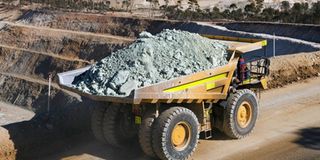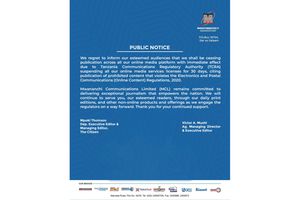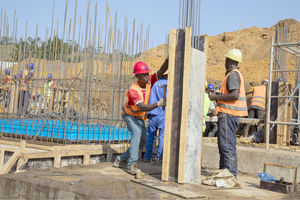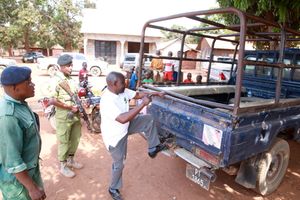‘Makinikia’ and economic liberation: The untold story – 2

What you need to know:
- By 1967, the political leadership of the day had figured out the means of achieving economic freedom by embracing a command economy in which the Arusha Declaration (1967) was inscribed and implemented with the urge to strive for more benefits from mineral resources
This week will chronicle the untold story of makinikia the epitome of economic emancipation by examining the ujamaa (socialist) experiment under the Arusha Declaration that wanted all mineral resources economic activities be placed under the State in order to attained economic self-reliance and freedom.
By 1967, the political leadership of the day had figured out the means of achieving economic freedom by embracing a command economy in which the Arusha Declaration (1967) was inscribed and implemented with the urge to strive for more benefits from mineral resources.
The implementation of the Arusha Declaration was intended to ensure mining brings more benefits to the nation but it forced the foreign owned large-scale mines.
These include the Geita, Buhemba, Korandatal, Saza, Kiyabakari, and Canuck Gold Mines to mentioned a few to suffocate and close except the Mwadui Diamond Mine that was 50-50 ownership between De Beers and the British Government thus the independent Tanganyika Government inherited the 50 percent share of the British Government.
Therefore, under the Ujamaa economic experiment the Tanzania Government became the sole investor in mining and by 1972 the State Mining Corporation (Stamico) was established by a Presidential Order and became operational in 1973 to allow the Government own and operate mining projects. Stamico then inherited the Mwadui Diamond Mine and established and operated TanCut Almasi, factory a diamond cutting and polishing factory in Iringa Town to cut and polish some of the diamonds before export abroad.
Stamico also established several other mines including Buckreef Gold mine that was established by salvaging mining plants and equipment from gold mines that were hurriedly closed. Other mines that were later established down the line included; the Minjingu Phosphate Mine; Kiwira Coal Mine. Kisarawe Kaolin Mine and Uvinza Salt Mines.
However, over time, Stamico became increasingly unable to profitably operate the government-owned mines and by the late 1970s, the socialist experiment was failing due to the rise of Western capitalist block and the failing of eastern communist bloc - the block that had maintained a Cold War in which socialism command economy was groomed and nurtured by the communist block and capitalist free market economy was nurtured by the capitalist bloc.
The Government of Tanzania by then had to rethink and reorient in order to survive this new world economic order. Once again a series of undertakings and economic reforms had to be invented and implemented to adapt to this rising economic global demand of globalisation in which the world became a global village demanding invitation of foreign direct investment (FDI) in mining investments.
The Government began inviting foreign assisted projects to help Tanzania build the necessary capacity to be able to profitably harness its mineral resources.
Some of the projects that were initiated included the Government contracting the Geosurvey International GMBH Company of Germany to carry out a countrywide airborne geophysical survey that included electro-magnetic and radiometric surveys to record areas of anomalous signs of mineralisation between 1978 and 1979 that would later be followed up by ground mineral exploration projects to discover economic mineral deposits.
The Geophysical Survey project was successfully accomplished in 1979 and air-borne magnetic and radiometric maps and data that were generated became the cornerstone of mineral exploration activities in Tanzania.
Stamico also started cooperating with foreign companies to explore gold for instance in 1982 it entered into a joint venture with Outokumpu company to explore the Bulyanhulu Gold deposit and develop a mine, but this was later sold to Sutton resources and then to Barrick in 1999.
Considering the foregoing account of the evolution of the mining industry in Tanzania, we may speculate that makinikia Story was another drastic step to try and achieve a win-win situation between the country and the investor as will be narrated later herein.
Next week we will continue to chronicle the efforts of the Government to ensure the mining industry becomes the engine for economic growth as we trail the foundation of the makinikia story.




